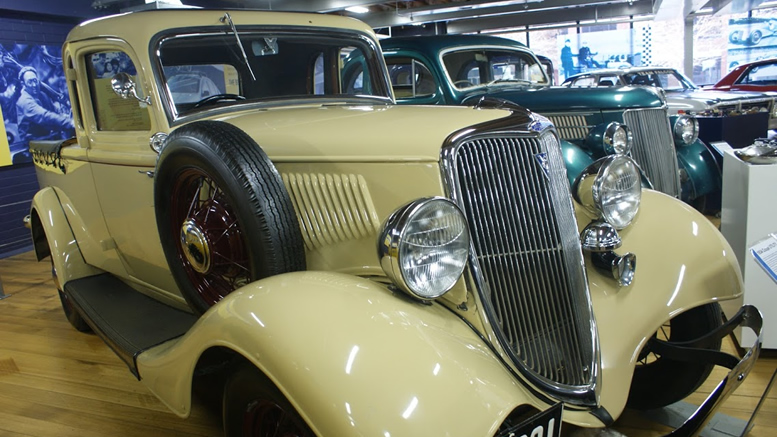The 1930s were exciting days for the emerging automotive industry, and Australia was fast developing a strong vehicle manufacturing presence. 1927 saw Ford’s ground breaking Model T coming to the end of its long production run and the introduction of a new suite of innovative cars offering new levels of refinement, luxury and features never before seen taking the market by storm. But the progression of small commercial trucks left a lot to be desired, being often just crude work vehicles with little comfort and spartan features. This gap in the market led to the creation of what would become one of the important segments in the world’s vehicle industry over the next century, the coupe utility, or ute, and it all started right here in Geelong.
Farmer’s are the main customer for the commercial vehicles, could not afford two vehicles, so they had to make the choice of a vehicle to help them on the land or a family vehicle. Usually the needs of the land won and the tough family truck doubled as the family car. With it carting supplies, produce and livestock during the week and the family in their Sunday best heading off to Church in the smelly, rough piece of agriculture.

In 1932 one farmers wife had enough, so she sent a letter to the Ford Australia’s head office in Geelong, asking why couldn’t they make a nice car to not only take me to church on Sunday but also useful for the farmer to take the pigs to market on a Monday. The letter quickly got the attention of Ford’s sales department and they called on one of their bright young designers Lewis Bandt to come up with a resolution that would start not only a new vehicle market but a integral part of Australia’s cultural makeup.
The 23 year old Bandt’s plan was to take the Ford Coupe of the day’s design and replace the sloping rear boot lid with a steel enclosed tray complete with a fold down tailgate. By 1933 the design and a prototype and approvals were complete and the world’s first ute rolled off Ford’s Geelong’s assembly plant in 1934. The utility was a huge success, with farmers now having the perfect multi purpose vehicle, where they could take the pigs to market during the week and then take the family to church on Sunday in relative comfort.
Lew Bandt continued to work with Ford’s design and engineering team until he retired in 1975. During his long career Lew helped design several popular models for Ford Australia and even traveled to the USA and Canada at the request of Henry Ford where he gave input to several of the company’s iconic vehicles. During World War II he also helped design fighter aircraft tanks when Ford’s Geelong plant switched to wartime production, but it is the ute that Lew is best remembered for.
After retirement Lew restored an example of his 1934 ute, painting it a light blue with white highlights He was also able to purchased the registration plates UT 001 which the vehicle proudly wore. The vehicle featured hand painted images of Australian flora and flora on the doors, all painted by Bandt. The vehicle became an iconic sight around the rural area to the west of Geelong. Tragically in 1987 after the filming a television piece for the ABC centered around the vehicle, Lew was involved in an accident near Bannockburn and was tragically killed in his beloved ute.

Following his death, the badly damaged ute was restored to showroom condition in a beautiful beige by a group of enthusiasts including The Early Ford V8 Club. The historic vehicle spent more than a decade as the most cherished exhibit at Geelong’s Ford Discovery Centre in Geelong until the centre closed in 2012 and now it occasionally seen in media events held by the Ford Motor Company.
As well as the ‘father’ of millions of utes around the world, Lew is also remembered by way of the Lewis Bandt Bridge that was named in his honour on the Geelong Ring Road in 2008.
